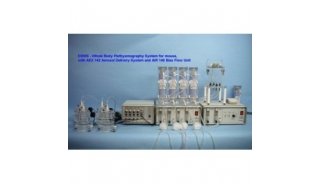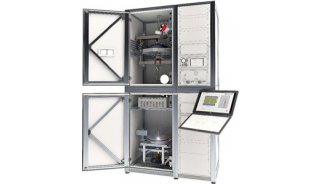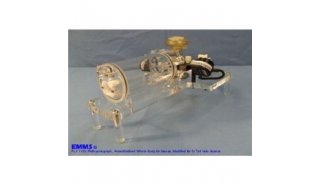Dynamic Monitoring ofCellular Remodeling Induced bythe Transforming Growth2
Results and discussion
Data acquisition demonstrated a linear increasing of the CI values in control cells during the time interval observed. However, this linear trend was significantly changed by TGF-β1 in less than 12 h after the treatment in a concentration-dependent manner (Fig. 1a). Concentrations of 1 and 10 ng/ml induced a significant steep increase in CI values, which reached a plateau in 48 h. The impedance-based determination is by its nature dependent on the number of adherent cells. Thus, we compared CI determination with the analysis of cell numbers to clarify the contribution of changes in cell numbers and the morphological alternation of cells to detected CI values. In parallel with the E-plates® 96, the cells were seeded at the same density on 40 mm dishes and 4-well plates, and treated with TGF-β1 in the same experimental design. At various time intervals after the treatment, the numbers of trypsinized cells were determined using a Coulter Counter simultaneously with the determination of metabolically active viable cells based on determination of intracellular ATP in cell lysate. Our data, shown in Fig. 1b, c, demonstrate that TGF-β1 induced antiproliferative effects in BPH-1 cells in a time- and concentration-dependent manner. These trends are in negative correlation with CI values acquired with the use of RTCA. Taken together, these data showed that the TGF-β1 induced antiproliferative effects in BPH-1 cells are paralleled by an increase of cell impedance.

Fig. 1 The antiproliferative effect of transforming growth factor-β1 (TGF-β1) is associated with the increase of the cell index (impedance) in BPH-1 cells. a TGF-β1 induces an increase of the cell index (impedance) acquired with the use of an xCELLigence real-time cell analyzer system in a time- and concentration-dependent manner. However, at the same time, TGF-β1 strongly inhibits cell proliferation quantified by counting of the cells using a Coulter Counter (b), and by ATP assay (c). The cells were treated with various concentrations of TGF-β1 at the time marked as time zero.
It is a well-known fact that when stimulated with TGF-β1, epithelial cells undergo EMT and exhibit a significant formation of actin stress fibers that emanate from focal adhesions (10). In this case, our results demonstrate the usual uncertainty of image analysis which is limited by confluence of the cells. The control cells reached a relatively high density after 72 h of cultivation. Based on the F-action visualization and cell morphology analysis, there is no significant difference between control cells and cells treated with 0.1 ng/ml of TGF-β1. However, it is evident that TGF-β1 at 1 and 10 ng/ml concentrations induced formation of F-actin stress fibers and increased cell spreading (Fig. 2). These results positively correlate with the activation of Smad-dependent signaling and EMT by TGF-β1 (Fig. 3). Our results showed transient phosphorylation of Smad2 induced by both 1 and 10 ng/ml of TGF-β1, which is followed by massive induction of vimentin expression. TGF-β1 at a concentration of 0.1 ng/ml did not induce vimentin expression and only slightly induced phosphorylation of Smad2. Furthermore, we wanted to examine the influence of formation of stress fibers on TGF-β1-induced increase of CI values. CB, a potent inhibitor of the formation of contractile microfilaments, induced inhibition of F-actin formation in both control and TGF-β1-treated BPH-1 cells (Fig. 4a). This inhibition was paralleled by a rapid decrease of normalized CI values in both groups (Fig. 4b). However, the drop of CI values induced by CB was much stronger in the case of TGF-β1-pretreated BPH-1 cells, with high abundance of F-actin stress fibers in comparison with CB-treated control cells. These results demonstrate that TGF-β1-induced increase of CI values is at least partially dependent on stress fiber formation. We can summarize that TGF-β1-induced EMT in BPH-1 cells is associated with inhibition of proliferation, rebuilding of cytoskeleton, formation of stress fibers, and increase of spreading. These cellular changes are associated with a significant increase in CI values analyzed by the RTCA system. Until now, most of the applications of RTCA focused on analysis of adhesion or spreading were designed to study immediate interaction of cells with substrate in relatively short time intervals (6, 11). Here, our data suggest a novel application and a great potential of real-time impedance measurement for dynamic monitoring of cellular remodeling and plasticity, induced after adhesion of the cells to the substrate and formation of stress fibers in longer time intervals. Furthermore, these measurements also show a potential misinterpretation of the data in experimental setups using impedance-based methods for the detection of cell proliferation without simultaneous monitoring of cellular morphological changes.

Fig. 2 The effect of transforming growth factor-β1 in BPH-1 cells is associated with remodeling of the cytoskeleton. F-actin was visualized with the use of phalloidin-fluorescein isothiocyanate conjugate. The nuclei were counterstained with DAPI. Images of cellular morphology were taken under phase contrast.

Fig. 3 Transforming growth factor-β1 induces phosphorylation of Smad2 and epithelial–mesenchymal transition in BPH-1 cells. The cells were lysed using radioimmunoprecipitation assay buffer, sodium dodecyl sulfate-polyacrylamide gel electrophoresis, and immunoblotting detection of p-Smad2 (Ser465/467); Smad2 and vimentin was performed. Detection of β-actin served as control of equal loading. Densitometric measurements were performed using ImageJ software (NIH, Bethesda, MD, USA) and normalized to the expression of β-actin. The bar graph represents the average optical density.

Fig. 4 Inhibition of formation of contractile microfilaments by cytochalasin B (CB) leads to a rapid drop of cell index values. BPH-1 cells were pretreated with transforming growth factor-β1 (10 ng/ml) for 68 h and treated with CB (10 μg/ml) for another 3 h. a F-actin was visualized by phalloidin-fluorescein isothiocyanate conjugate after 3 h of CB and/or vehicle treatment. b CB induces a rapid decrease of the normalized cell index (data were normalized at the time of 68 h) acquired with the use of an xCELLigence real-time cell analyzer system. The arrow indicates the time interval of CB addition.
Acknowledgment The authors would like to thank Viktor Horváth (Roche Czech Republic) for his assistance with xCELLigence RTCA, Iva Lišková, Jaromíra Netíková and Petra Jelínková for superb technical assistance, and Ladislav Červený for the correction of English. This work was supported by grant number 204/07/0834 of the Czech Science Foundation, and grants numbers AV0Z50040507 and AV0Z50040702 of the Academy of Sciences of the Czech Republic.




















